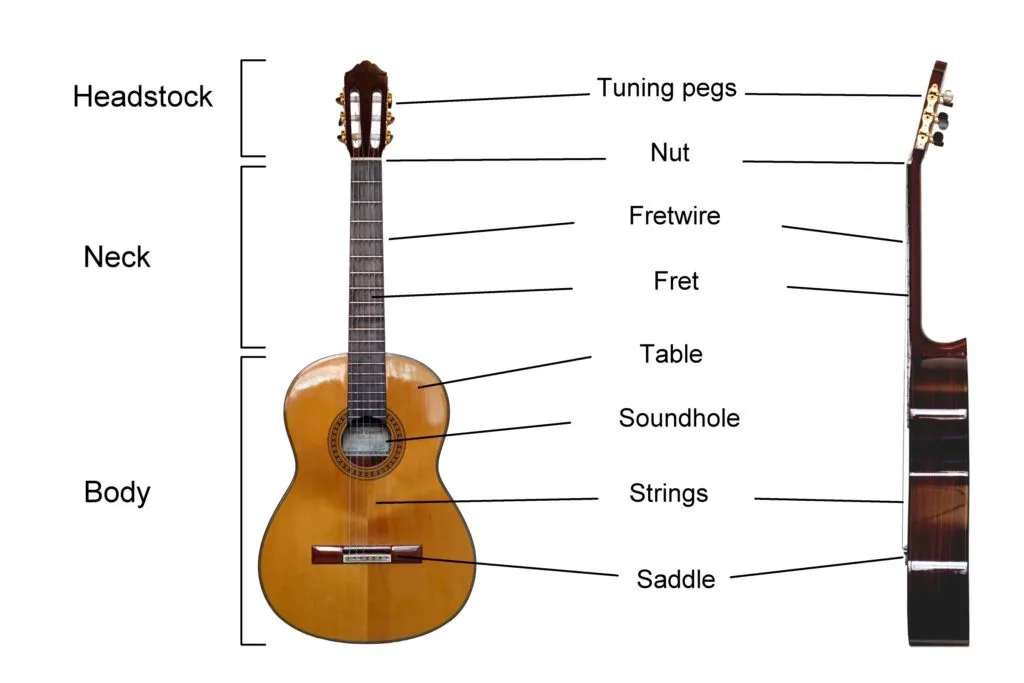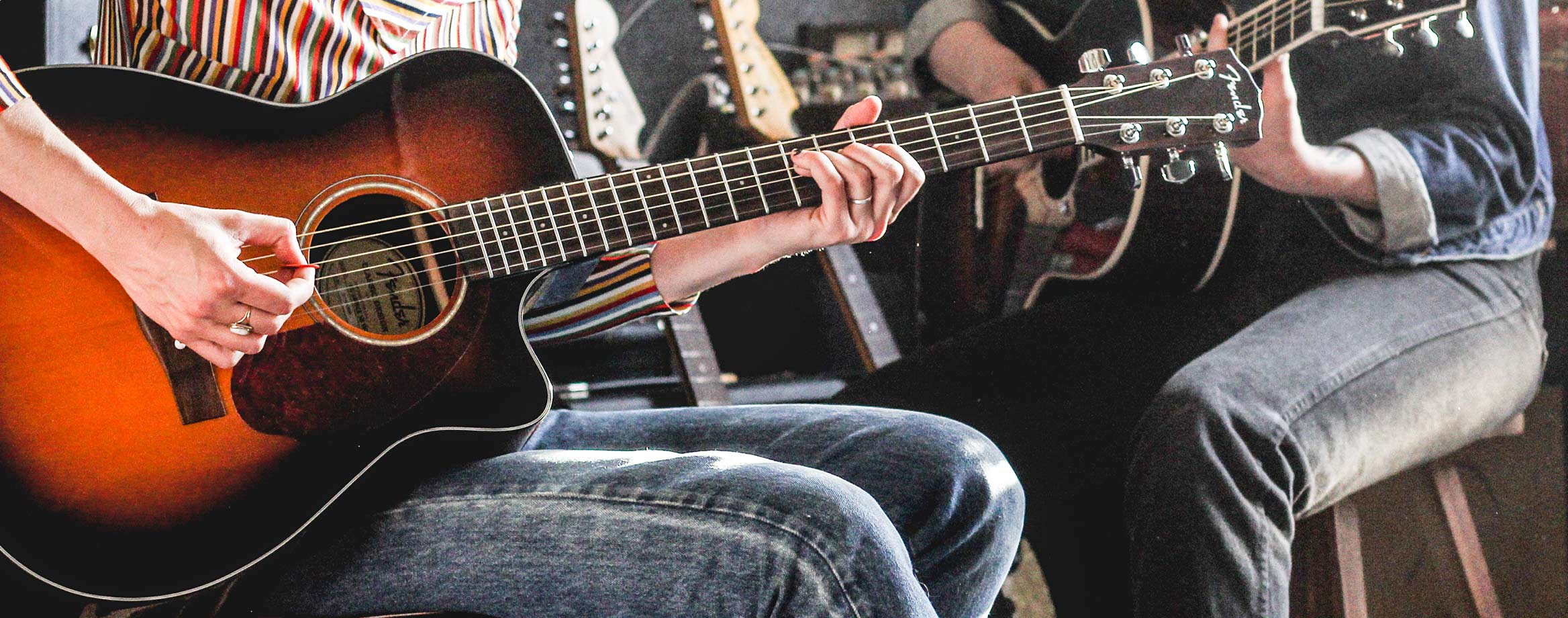Are you eager to learn guitar fast and become a rockstar in no time? As someone who has been playing the guitar for years, I know how overwhelming it can be to try and master this instrument quickly. But don’t worry, I’m here to help!
In this comprehensive guide, we’ll cover all the essential tips and techniques you need to know in order to learn guitar fast. From mastering chords and scales to developing good practice habits, I’ve got you covered. Plus, I’ll share my personal experience with learning the guitar so you know what works best.
If you’re ready to take your skills from beginner to badass guitarist, then keep reading! This guide is perfect for anyone looking to pick up the guitar or improve their existing skills in a short amount of time. So grab your instrument and let’s get started on this musical journey together!
So, how to learn guitar fast?
With dedication and practice, you can learn guitar at a fast pace. It’s important to have the right resources and techniques in place to help you progress quickly. This ultimate guide will provide you with all the necessary information and tips to help you become a proficient guitarist in no time.
Firstly, it’s crucial to invest in a good quality guitar that suits your needs and playing style. A well-made instrument will not only sound better but also make learning easier for beginners. You can choose between an acoustic or electric guitar depending on your preference.
Next, familiarize yourself with the basic chords and strumming patterns. These are the building blocks of playing any song on the guitar. Practice them regularly until they become second nature to you.
Another helpful tip is to find a skilled teacher or online tutorials that can guide you through proper technique and give personalized feedback on your progress. Learning from someone who has experience and expertise will accelerate your learning process.
Additionally, set aside dedicated practice time each day rather than sporadic sessions throughout the week. Consistency is key when it comes to mastering any skill, including playing guitar.
Lastly, don’t be afraid to challenge yourself by trying new songs or techniques outside of your comfort zone. Pushing yourself out of familiar territory will improve your skills faster.
Remember that learning guitar takes time and effort, but with determination and this ultimate guide as your resource, you’ll be strumming along like a pro in no time!
Understanding the Guitar Basics: Chords, Scales and Finger Placement
When you first pick up a guitar, it can feel overwhelming. However, diving into the basics makes it more enjoyable and exciting! Chords are like the building blocks of music; they blend together to create harmony. A chord is simply a combination of notes played simultaneously. For beginners, starting with simple chords like G, C, and D opens up a world of possibilities. To play these chords smoothly, proper finger placement is essential. Your fingers should curve over the strings without touching others accidentally—this allows each note to ring clearly. It may take some practice to develop calluses on your fingertips, but that’s all part of the journey!
Scales come next in your musical adventure and help you explore melodies more freely. They are sequences of notes arranged in ascending or descending order that serve as pathways for improvisation and soloing. The major scale is often the go-to choice because it sounds cheerful and bright! With scales under your belt, you’ll discover how different combinations evoke various feelings in music—as if you’re telling stories through sound. Remember to keep practicing regularly; even just a few minutes daily makes a significant difference over time! Embrace this beautiful instrument one strum at a time; soon enough, you’ll be creating lovely tunes that resonate with both yourself and others.

Read also: how to learn guitar fast
Perfecting Your Guitar Strumming Technique: Rhythm and Timing
Mastering the art of guitar strumming is all about finding that sweet spot between rhythm and timing. When you strum, it’s not just about hitting the strings; it’s about creating a lovely flow that resonates with listeners. Think of your hand as a conductor leading an orchestra. The downstrokes produce a strong beat, while the upstrokes add a gentle lift to your music. To develop this skill, practice counting beats out loud as you play—this will help internalize the rhythm and make your playing feel much more natural.
Another great way to enhance your technique is by experimenting with different patterns and styles. Start with simple rhythms like down-down-up-up-down, then gradually introduce variations or syncopation for added flair. You can also use tools such as metronomes to keep steady time; they’re like having a heartbeat right in front of you! Plus, listening carefully to songs can inspire new ideas for strumming patterns. Consider breaking down your favorite tunes into sections: analyze how each part interacts rhythmically, which will deepen your understanding of timing in music.
By blending these practices together, you’ll soon notice how confidence grows within every chord you strike!
Establishing Effective Guitar Practice Habits for Rapid Progress
Creating strong practice habits can make a world of difference for anyone learning guitar. First, it’s important to set aside a specific time each day dedicated solely to playing. This consistency helps your fingers get used to the strings and builds muscle memory. Try breaking down your practice into smaller chunks: focus on scales for ten minutes, then work on chords, followed by a song you’re excited about. Keeping sessions short but focused allows you to stay engaged without becoming overwhelmed. Remember, quality over quantity is key; even just 30 minutes of intentional practice can be more effective than hours spent mindlessly strumming.
Additionally, tracking progress is an excellent way to stay motivated and see how far you’ve come. Consider keeping a journal where you jot down what you practiced each day or record yourself playing occasionally. This not only highlights improvement but also identifies areas that need extra attention. Joining online communities or finding a buddy who plays can provide support and encouragement as well! Constructive feedback from others is invaluable—it pushes us out of our comfort zones while helping develop new skills in ways we might overlook on our own.
Incorporating these strategies into your routine will foster effective habits that lead to rapid growth as a musician!
Exploiting Online Resources and Tools to Accelerate Guitar Learning
In today’s digital age, learning guitar has never been easier. Thanks to a myriad of online resources, aspiring musicians can access an incredible range of tools that cater to all skill levels. Websites like YouTube offer thousands of video tutorials, allowing learners to watch and listen simultaneously. These videos often break down complex songs into manageable sections, which helps with understanding finger placement and rhythm. Additionally, platforms like Ultimate Guitar provide chord charts and tabs for countless songs across various genres. This interactive approach allows players to play along with their favorite tracks while developing their unique style.
Moreover, apps designed specifically for music practice have emerged as invaluable companions on the guitarist’s journey. Tools such as Yousician or Fender Play combine lessons with real-time feedback, making practice sessions engaging and effective. With features like personalized progress tracking and gamified learning experiences, these applications motivate users to reach new milestones regularly. Social media also plays a significant role in connecting learners; forums and groups allow budding musicians to share tips or seek advice from experienced players worldwide. By harnessing these online resources thoughtfully, anyone can accelerate their guitar learning experience while enjoying the creative process!
You may also like: orchestra expressions
Building Confidence with Guitar Performances: Overcoming Stage Fright
Stepping onto a stage, guitar in hand, can feel like standing at the edge of a great chasm. For many aspiring musicians, stage fright looms large—an invisible barrier that makes even the smallest performance seem daunting. However, each strum and chord played in front of an audience is not just about music; it’s also an opportunity to build confidence. The first step is often preparation. Knowing your songs inside out helps ease anxiety. Practicing regularly allows you to focus on sound rather than worrying about what others think. Familiarity with your material transforms nerves into excitement.
Another way to combat those jitters is through visualization. Imagine yourself playing perfectly: picture the bright lights, hear the applause echoing around you. This mental rehearsal creates a powerful sense of familiarity with performing that calms nerves when stepping onto an actual stage. Surrounding yourself with supportive friends or fellow musicians can also make a huge difference; sharing this experience fosters camaraderie and encouragement during performances.
With each show, no matter how small, one learns resilience as mistakes become part of the journey rather than stumbles on perfection’s path. Ultimately, every successful performance chips away at fear and builds lasting self-assurance that resonates long after the last note fades away.
Conclusion: Keep Going, Every Guitar Hero Started Where You Are Now
Learning to play the guitar can feel like standing at the foot of a towering mountain. It’s exciting, yet overwhelming. You might find yourself staring at those strings, wondering how anyone ever turns them into music. But here’s the secret: every master guitarist once stood right where you are now—holding that shiny instrument with dreams swirling in their minds. The journey starts small; perhaps it begins with simple chords or strumming patterns that don’t quite sound perfect at first.
As you practice, though, something magical happens! Each session brings tiny victories and little breakthroughs. Maybe today you nailed your first song or finally got your fingers to cooperate on a tricky transition between chords. Celebrate these steps! Progress is progress, no matter how small it seems. Surround yourself with inspiration by listening to different genres and styles; let them ignite your passion further. Create a routine where you spend just five minutes each day playing what you love or trying something new—those moments add up quickly! Remember, patience is key in this musical adventure because even the greatest musicians were once beginners who chose not to give up when things felt tough.

